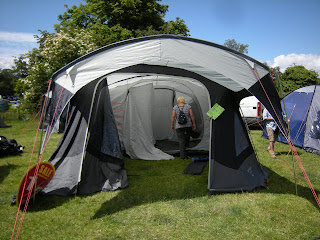

On a cloudy day, that felt like rain, we drove up the small road to the hilltop where Granan sits. It is a round stone fort, although the ancient tradition calls is a meeting place. The lairds would come for conference, bringing their men at arms, because from Granan one can see for miles in all directions. Each laird would arrive from their own direction and could watch to see that there was no ambush being planned. Today we weren't worried about ambush, just thrilled at the 360* view. This is truly an island of water!



The stones which make up the Granan are black, but occasionally have a piece of quartz. The fort is 77 ft in diameter. It was likely built aroung the 5th century, BC. Tradition says that St Patrick baptized Owen O'Neill, the founder of the clan, here in 450 AD. The O'Neill's lived here until the 12th century when it was damaged by the army of Murtagh O'Briean, King of Munster.

This is another one of those magic places, just because it has been here so very, very long.
Farther up the Inishowen Peninsula is the village of Cardonagh, home of a 7th century cross. It is carved with human figures and, at least to my eyes, Celtic designs. There are two little posts on either side that are supposed to be David as the slayer and David as the poet.















































